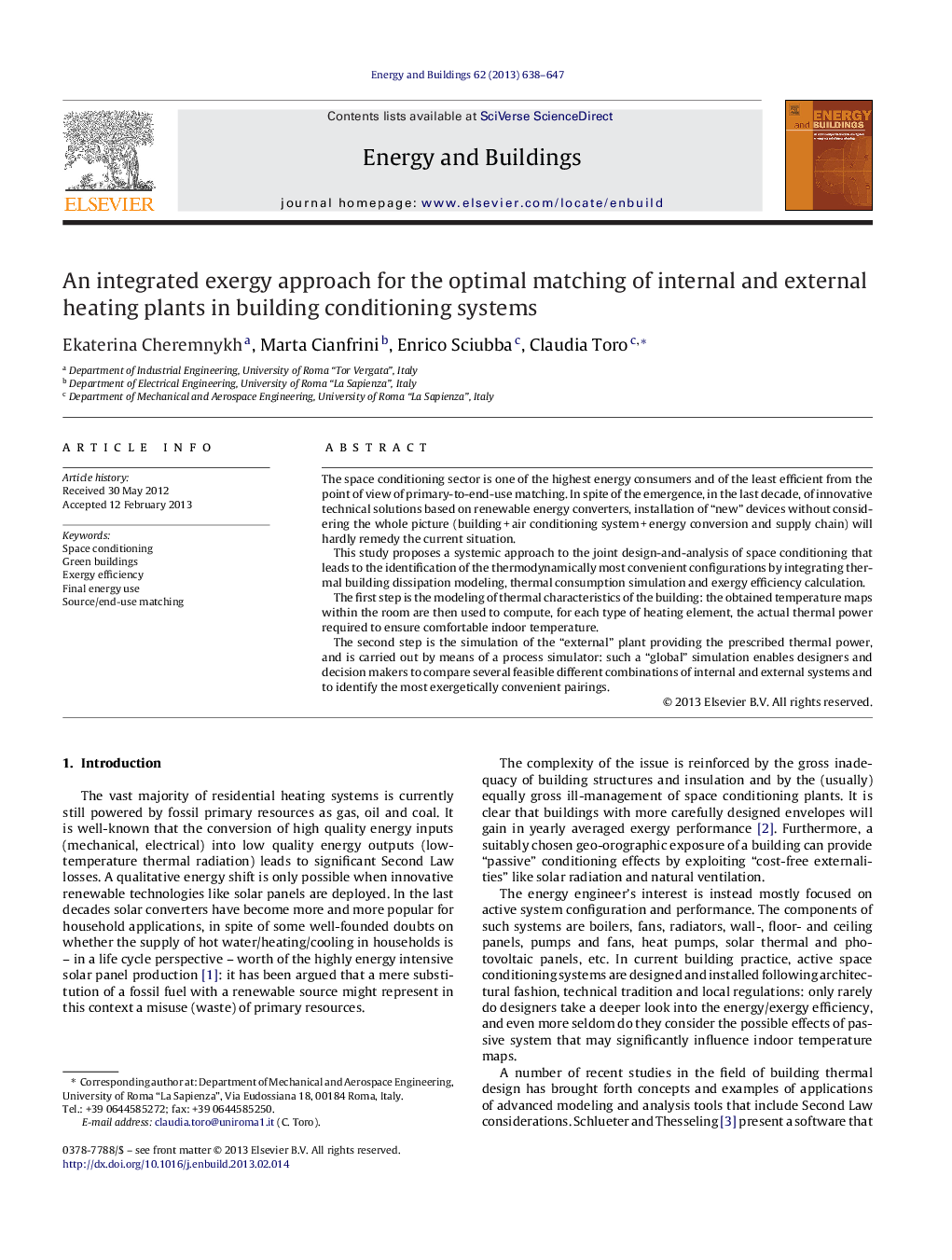| کد مقاله | کد نشریه | سال انتشار | مقاله انگلیسی | نسخه تمام متن |
|---|---|---|---|---|
| 263325 | 504071 | 2013 | 10 صفحه PDF | دانلود رایگان |

The space conditioning sector is one of the highest energy consumers and of the least efficient from the point of view of primary-to-end-use matching. In spite of the emergence, in the last decade, of innovative technical solutions based on renewable energy converters, installation of “new” devices without considering the whole picture (building + air conditioning system + energy conversion and supply chain) will hardly remedy the current situation.This study proposes a systemic approach to the joint design-and-analysis of space conditioning that leads to the identification of the thermodynamically most convenient configurations by integrating thermal building dissipation modeling, thermal consumption simulation and exergy efficiency calculation.The first step is the modeling of thermal characteristics of the building: the obtained temperature maps within the room are then used to compute, for each type of heating element, the actual thermal power required to ensure comfortable indoor temperature.The second step is the simulation of the “external” plant providing the prescribed thermal power, and is carried out by means of a process simulator: such a “global” simulation enables designers and decision makers to compare several feasible different combinations of internal and external systems and to identify the most exergetically convenient pairings.
► A systemic approach to the joint design and analysis of space conditioning is proposed.
► The heat demand for a given heating system of a residential space is obtained by CFD.
► The exergy demand of the conditioning system is calculated by a process simulator.
► Exergy efficiency of each configuration is calculated and ranked accordingly.
► Case studies are presented and discussed.
Journal: Energy and Buildings - Volume 62, July 2013, Pages 638–647